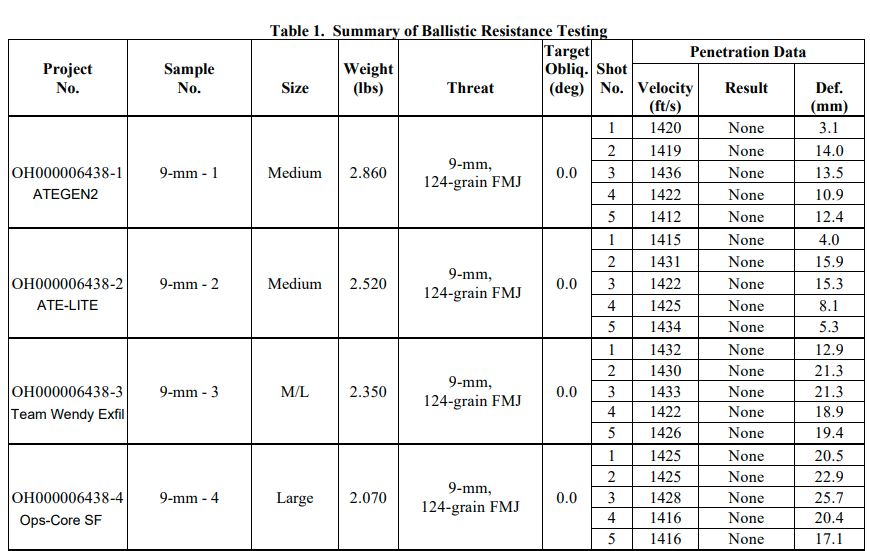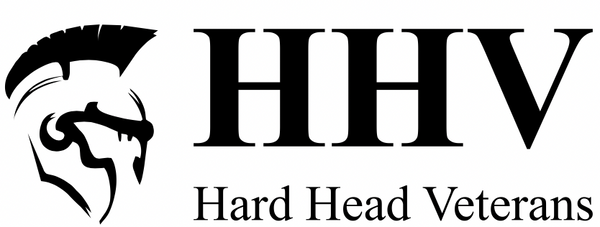BEST BALLISTIC HELMET COMPARISON GUIDE

Best Bang For Your Buck
Best Bang For Your Buck
Best Bang For Your Buck
Best Bang For Your Buck
Best Bang For Your Buck
Best Bang For Your Buck
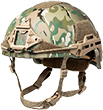
HHV ATE® BALLISTIC HELMET
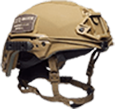
TEAM WENDY EXFIL® BALLISTIC

3M F70 BALLISTIC (AVON RUBBER
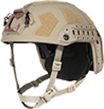
OPS-CORE FAST® SF
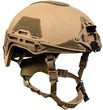
HHV ATE LITE Ballistic Helmet
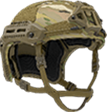
MTEK FLUX BALLISTIC
BOTTOM LINE
Looking for a helmet with all the features, but not all the price? The ATE meets this need and more. Using Aramid Kevlar, the ATE achieves excellent ratings across the board, while still being comfortable and light.
Team Wendy is known for their aftermarket padding and retention systems, so it's no wonder their full helmet is excellent. Not only is it comfortable, but you get excellent retention adjustment with their BOA system.
3M F70 is scalable, modular platform with a unique geometry that is designed to maximize fit. They have pushed the envelope in UHMWPE's production with the result being one of the lightest helmets on the market today.
From the original workhorse and one of the most common helmets worn by Special Operations around the globe the OPS-CORE Fast SF Super High Cut helmet improves upon their legacy FAST helmet.
The HHV ATE® Lite is an ultralight ballistic helmet that doesn't sacrifice protection for weight. The helmet shell (1.6lbs) is made up of UHMWPE and aramid fibers, and utilizes our patent pending Micro Lattice Pads.
MTEK's long-awaited launch of there FLUX Ballistic Helmet did not disappoint. Crafted using advanced polyethylene fibers, and a profile designed to cradle the user's head it's the new hottest thing.
PROS
Reasonable price, but still meets and exceeds all standards. Features M-LOK rails, A3S shroud, and 3 part comfort pad system. Designed to be compatible and upgradable with other helmet manufacturers systems and various components.
Arguably uses the best retention system on the market with their CAM FIT system along with the super comfy Zorbium Foam Liner with 16 customizable pads. Utilizes a two-hole Wilcox W shroud for night vision mounting needs with shock cord included.
This new helmet from 3M provides a perfect combo of weight and performance along with a no thru-hole construction. It's easily scalable to work for any application and works with industry-standard accessories.
The OPS-CORE FAST SF or High Cut helmet is light 1.4-1.7 lbs shell weight, modular, and an industry standard, what more could you want! Comes standard with a rail system, NVG shroud, and multiple types of retention systems (OCC Dial, LUX Liner, Worm Dial, H-Nape).
The micro lattice pads not only conform naturally to your head, but they also decease backface deformation and provide passive cooling within the helmet. The Snapback retention also provides dial like retention without the possible fail points of a dial for a set it and forgot it fit.
The helmet itself is exceptionally light coming in at 2.2 lbs. The helmet's ergonomics follow the natural shape of the head which also gives excellent comfort and stability. 100% boltless shell,meaning no weak spots on the shell itself.
CONS
Shells are slightly heavier between 2.7 -2.9 lbs. Shells are manufactured overseas with US materials.
Slightly fewer helmet accessories options available, marginally heavier shell between 2.6 lbs-2.75 lbs
3M has a number of helmet offerings, but to get their very best you are going to pay! Actual BFD data is not published, but we will guess since it's a UHMWPE based shell, BFD will be in the upper limits.
Lead times and price are a factor at 16 week wait times, after paying 1,700 + dollars.
Lighter weight helmets require higher end materials and the Lite is no different, you will pay more for this helmet as it's made in the USA as well.
This awesome helmet will set your pocketbook back, and you can plan to wait 18-20 weeks. We would like to see actual blunt, and BFD data
TESTING DATA
NIJ Level: IIIA
Back-Face Deformation: Crown BFD 15.0mm, Side BFD 13.3mm, Front BFD 14.8mm, Back BFD 8.5mm
Fragment Perfomance: 17gr V50 ≥ 2400 ft/sec (731 m/s)
Blunt Impact: AR/PD 10-02 (AVG 83G) over 14 drops.
NIJ Level: IIIA
Back-Face Deformation: Less than 25.4mm
Fragment Perfomance: 17gr V50 ≥ 2400 ft/sec (731 m/s)
Blunt Impact: AR/PD 10-02
NIJ Level: IIIA
Back-Face Deformation: Less than 25.4mm
Fragment Perfomance: 17gr V50 value >2,760fps (>840 m/s)
Blunt Impact: AR/PD 10-02
NIJ Level: IIIA
Back-Face Deformation: Crown BFD 23.4mm, Side BFD 27.1mm, Front BFD 29mm, Back BFD 19.1mm
Fragment Perfomance: 17gr V50 ≥ 2400 ft/sec (731 m/s)
Blunt Impact: AR/PD 10-02
NIJ Level: IIIA
Back-Face Deformation: Crown BFD 6.4mm, Side BFD 14.6mm, Front BFD 8.9mm, Back BFD 3.2mm
Fragment Performance: 17gr V50 ≥ 2500 ft/sec (731 m/s)
Blunt Impact: AR/PD 10-02 (AVG 70G) over 14 drops.
NIJ Level: IIIA
Back-Face Deformation: Not Published
Fragment Perfomance: Not Published
Blunt Impact: Not Published
Your Guide To The Best Ballistic Helmets On the Market
HOW DID WE MAKE OUR DECISIONS?
Here at Hard Head Veterans, we are naturally partial to our own ballistic helmets, but we will be the first to admit that there are other great products out there. We kept this review as unbiased as possible. The research conducted to analyze and compare these high cut ballistic helmets was in depth and based not only on initial impressions and hard data, but also off of the experiences of numerous Special Operations members, Police Officers, and industry experts.
9 models tested and should be 1000's of customer reviews.
How We Decided
Each night vision device tested was purchased or borrowed, we never
accept anything from product manufactureres.

9
Models Tested

12
Experts Interviewed

1000
Consumer Reviews
Here at Hard Head Veterans, we are naturally partial to our own High Cut Ballistic helmet the ATE Ballistic, but we will be the first to admit that there are other great products out there. We kept this review as unbiased as possible. The research conducted to analyze and compare these high cut ballistic helmets was in depth and based not only off initial impressions and hard data, but also off of the experiences of numerous Special Operations members, Police Officers, and industry experts.
Ready to head out and purchase a high cut or FAST® helmet? Make sure to check out our matrix above for our top 6 high cut type ballistic helmets and the pros and cons of each!
If you are looking for additional information about shopping for a ballistic helmet, continue reading our shopping guide below.
When it comes to helmets that soldiers and police wear in modern times there are three types you will hear most often, and they refer to the shape or design of the helmet: PASGT, MICH/ECH/LWH, High-Cut, FAST®, Above The Ear
Each type of helmet has its uses and purposes. For this review though we are focusing on the High-Cut style helmets.

PASGT

MICH/ECH/LWH

HIGH-CUT/ABOVE THE EAR
Honorable Mention
Crye Precision Air Frame ATX
Design Difference
The AirFrame ATX is of the same design as the original airframe with a little more protection up to IIIA. The overlapping shell design creates air vents for passive cooling and can also reduce the effects of explosive blast waves. It's made in the USA from US materials.

BALLISTIC HELMET TESTING
Test Types
One of the most critical aspects of choosing a helmet is making sure it will perform the way it's intended. While we did not submit each of our review helmets to NIJ labs for testing any reputable company should be able to provide detailed testing reports. Here at Hard Head Veterans we random batch test helmets in-house, and also send out helmets annually to a 3rd party certified NIJ laboratory for the following tests which we consider the most important.
Resistance to Penetration: (NIJ Level IIIA (according to NIJ STD 0106.01 / 0108.01) (9mm, 357, and .44 magnum)
Backface Deformation: 9mm (1400fps) BFD: Avg less then 25 mm all locations (front/back/crown/sides. Here at HHV we also test to .40S&W and .45ACP.
Fragmentation Performance: 17gr V50 ≥ 2400 ft/sec (731 m/s)
Blunt Impact Performance: (per AR/PD 10-02): Avg Less then 150g's over 14 drops
Along with the major test's above, some others that should be tested as well are compression testing, and even element testing (hot, cold, wet, salt). Another thing to remember is the NIJ does not certify helmets like they do body armor, so it's up to
you to ask for testing data to ensure the helmet meets your performance needs!
BREAKING DOWN BACKFACE DEFORMATION
The understanding and significance of backface deformation (BFD) in ballistic helmet testing can be muddled due to various factors. Many companies have shifted away from conducting BFD tests (as you will see missing info in the graph above), contracts no longer explicitly require it, and new standards, such as the ASTM standard for police helmets, have made BFD testing optional. This has resulted in a considerable amount of confusion surrounding this important aspect of helmet assessment.
At Hard Head Veterans, we firmly believe that BFD testing is of vital importance. We recognize its significance in evaluating helmet performance and ensuring the highest level of protection. That is why we conduct extensive BFD testing as an integral part of our quality assurance process.
Check out this video for a better understanding of this vital piece of testing.
PRODUCT IN DEPTH
MTEK FLUX Ballistic Helmet
Features
The MTEK Flux Ballistic Helmet is packed with excellent and innovative features. The ergonomics of the helmet alone make for one of the most stable helmets we have ever tried. Undercut in the rear for prone shooting, two sets of comfort pads for a custom fit, and a "bolt-through-less" shell make for nothing short, but an outstanding helmet.
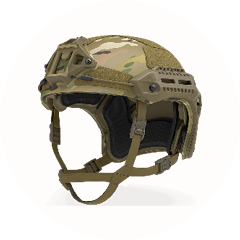
BALLISTIC HELMET FEATURE CONSIDERATIONS
Weight
Your helmet is going to be specific to your needs, and the weight will reflect this. While all of the helmets we tested are incredibly lightweight compared to earlier helmets, some are notably lighter than others.
Lighter weight helmets typically come with a simple trade-off, less protection. Usually, the same resistance to penetration can be achieved with much lighter helmets, but the backface deformation and blunt impact numbers increase as you decrease weight.
While heavier helmets give a little extra protection, anyone who has worn a ballistic helmet for 10 + hours and walked 10 kilometers to the objective knows that every single ounce counts. This is where lighter weight helmets excel and can make the difference between cursing every step or being focused on the task at hand.
So as you can see weight plays an important role and should help you decide on which ballistic helmet is right for you.
Accessories & Compatability
Lights, Up-Armor, O2 Masks, NVGs, Communications systems, and much more are commonly found on any modern army helmet or police helmet. Adding these to add weight though, check out our calculator to see how much!
Most helmet companies have stuck to the dovetail rail design that allows for compatibility with most others. This includes Avon Rubber, OPS-CORE, Crye, and more. Others such as ourselves, MTEK and Team Wendy have their own systems for mounting accessories. All offer some type of standard Mil-Spec picatinny rail adapter though.
Compatibility should also be considered when outfitting the perfect ballistic helmet. Companies such as Hard Head Veterans designed their helmets to work across multiple retention system types, pads, and other accessories allowing for further personalization of your helmet.
PRODUCT IN DEPTH
3M™ Ballistic Helmet System F70
Weight
Avon Rubber recently purchased 3M's helmet line up, and you can expect some changes coming to this guide in the future.* The 3M™ F70 Ballistic Helmet shell weighs in at 1.56 lbs. Pads, and other accessories do add plenty of more weight, but it is still amazingly lightweight! It's precisely what you would expect from a company that specializes in innovation across multiple industries.
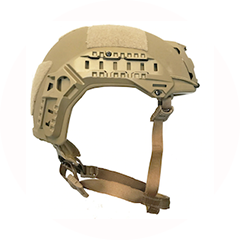
BALLISTIC HELMET FEATURE CONSIDERATIONS
Retention System
Each of the helmets we tested came with their own style of retention system.
Retention systems break down into two basic categories. One with a dial adjustment in the back of the helmet, similar to a construction helmet, the other without. The dial systems allowed for additional adjustment and a great fit. The con is the extra room they take up inside the helmet.
The 4-point chin-strap system of various designs were the others we tested. X-nape, H-nape, H-Harness, and Cam-Lock. Many of these worked great depending on helmet design, while others failed to achieve enough adjustment. The H-Harness found in older issued ACH/MICH helmets were the worst we tested. With the H-Nape from OPS-CORE and the Cam-Lock in the MTEK helmet being the best.
Helmet Pads
Searching for the most comfortable helmet pads, especially for ballistic helmets becomes vital typically after that first donning of a ballistic helmet for more than 5 minutes. Standard pads in most older helmets are designed poorly and sometimes even dangerously. Aside from the normal hot spots, headaches, and fatigue associated with uncomfortable helmet pads, pads that are too hard, too thin, or even too soft can increase the risk of brain damage from an impact.
Luckily almost all of the helmet pads we tested were average and above in our opinions. Our favorite, of course, was our own aftermarket Comfort Plus Pads, but Team Wendy makes outstanding pads, along with the pads that come with the MTEK ballistic helmet.
Most helmets used velcro discs on the inside of the helmet to allow the user to change out, modify, or re-position pads to get the very best fit.
PRODUCT IN DEPTH
Team Wendy EXFIL Ballistic Helmet
Retention System
Team Wendy and their EXFIL ballistic helmet come with their CAM-FIT retention system. This is a micro-adjustable dial made by BOA which allows the user to get the perfect adjustment with the helmet. Many other ballistic helmet companies also offer the Team Wendy CAM-FIT retention standard in their helmets as well.
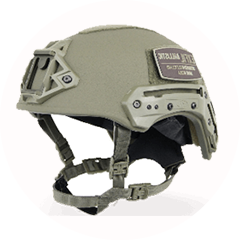
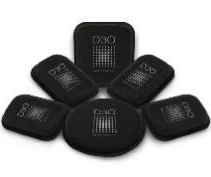
D3O TRUST PADS
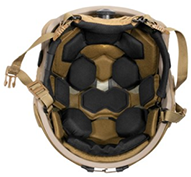
CLOUDLINE™ SYSTEM
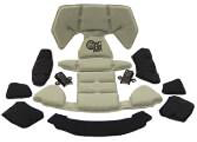
TEAM WENDY EPIC AIR PADS
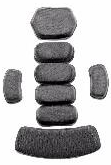
HARD HEAD VETERAN COMFORT PLUS PADS
Did You Know?
Headset adapters used to mount communications headsets or ear protection are one of the most common accessories mounted on high cut helmets.
Currently, Three Companies Make These
Unity Tactical
3M Peltor
Hard Head Veterans
For Your Safety
Always try and keep any interior bolts or other hard components covered with your pad and retention system.
During blunt and ballistic impacts you want your skull coming in contact with pads before anything else.
HOW MUCH SHOULD I PAY FOR A BALLISTIC HELMET?
Ballistic helmets are available at a variety of price points, but depending on the model, you can typically expect to spend between $200-$1500 dollars for a high cut type helmet. You may also have luck finding a used helmet for much less, but be sure to check out the date it expires.
For a helmet that meets all safety and testing standards expect to pay $400 or more, and for a higher end, lightweight helmet expect to pay $1000 or more.
A note on high cut helmets with prices in the $200-$300 range, the ones we tested were made with unidentifiable fibers, and none of these companies could produce test data beyond a single resistance to penetration test. Buy at your own risk.
TIPS AND TRICKS
Modern ballistic helmets are designed to be customized to your head. Don't be afraid to reposition pads, try out different systems, and find the perfect fit.
Like any piece of gear, take care of it, and it will take care of you. Helmets are no different. You should make sure to keep a finish of paint over the fiber layers themselves. Along with inspecting your helmet from time to time for any defects and contacting the manufacturer if there are any.
On color selection, we suggest choosing the one you will need the most. You can always spray paint a helmet to match changing environments or buy a helmet cover.
On color selection, we suggest choosing the one you will need the most. You can always spray paint a helmet to match changing environments or buy a helmet cover.
One way to offset the extra weight of attached Night Vision Goggles is to attach a counterweight to the back of the helmet. This can be done with a number of homemade solutions or off the shelf counter-weight products.
When considering your purchase, don't be afraid to ask the manufacturer for full testing documentation.
PROS AND CONS OF HARD HEAD VETERANS' ATE LITE (USA MADE) AND ATE GEN2 (CHINA MADE)
ATE LITE (USA MADE):
Pros:
High-Quality Production: The ATE Lite is manufactured in the USA, ensuring adherence to stringent quality standards and meticulous craftsmanship.
Reliable Material Selection: The helmet is constructed using carefully selected high-quality materials sourced from trusted suppliers (Honeywell, Barrday) ensuring exceptional performance and durability.
Local Manufacturing Support: By producing the ATE Lite domestically, Hard Head Veterans supports local jobs and contributes to the economy.
Cons:
Higher Cost: The production costs associated with manufacturing the ATE Lite in the USA result in a higher price point compared to the ATE GEN2.
Limited Production Capacity: The USA-made production capacity may have certain limitations, potentially leading to longer lead times or supply constraints.
ATE GEN2 (CHINA MADE):
Pros:
Cost-Effective Option: The ATE GEN2 offers a more cost-effective alternative, making it accessible to a wider range of customers with budget constraints.
Quality Fibers: The helmet is produced in China using quality fibers sourced from either the USA or the Netherlands (DuPont and Teijen), ensuring reliable ballistic protection.
Large-Scale Production: Chinese manufacturing capabilities enable high-volume production, allowing for quick fulfillment of large orders.
Cons:
Quality Control Consideration: While we have extensive quality control measures in place, producing in China requires thorough double-checking to ensure adherence to our rigorous standards.
Reliance on Foreign Entities: Manufacturing in China means increased reliance on foreign entities for production and supply chain, which can present logistical challenges and require close monitoring.
At Hard Head Veterans, we offer both the USA-made ATE Lite and the cost-effective ATE GEN2 to provide options that cater to different needs and budgets. We understand that customers may have preferences based on factors such as quality, origin, and price. By presenting these choices, we aim to meet the diverse requirements of our valued customers while ensuring that both helmets maintain high standards of performance and protection.
PRODUCT IN DEPTH
Hard Head Veterans ATE Ballistic Helmet
Design Difference
Utilizing USA made aramid kevlar fibers HHV adds a few extra layers to its shells to give the user slightly better protection than most lighter weight helmets. The tradeoff of 4-8 ounces for a few additional layers of kevlar means a vast difference when it comes to back face deformation and blunt impact numbers while also increasing the resistance to penetration with in-house tests defeating .50AE.
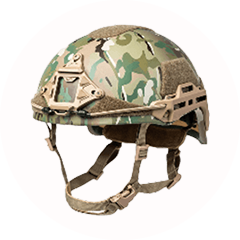
COMPARING APPLES TO APPLES: UNDERSTANDING BALLISTIC HELMET VARIETIES
When it comes to ballistic helmets, the wide range of options available can make it challenging to compare them effectively. Factors such as surface area, helmet cut, pad variations, chin-strap setups, and accessories all play a significant role in determining the final weight and performance of the helmet. Additionally, the type of material used also impacts the helmet's capabilities, with some prioritizing fragmentation protection while others focus on limiting backface deformation.
It's important to recognize that with any type of armor, there are always tradeoffs to consider. Finding the best helmet for your needs requires careful consideration and comparing apples to apples. Here are some key points to keep in mind:
Weight: The actual weight of a helmet can vary depending on its design and features. Lighter helmets may offer increased comfort and mobility, but may sacrifice some level of protection.
Performance Factors: Different helmets prioritize different performance aspects, such as fragmentation protection or limiting backface deformation. Consider the specific requirements and risks associated with your needs to determine which performance factors are most important for you.
Material Selection: The choice of materials impacts both weight and protective capabilities. Understanding the pros and cons of different materials, such as aramid fibers or composite blends, is essential in making an informed decision.
Tradeoffs: Recognize that no helmet can excel in every aspect. There may be compromises in terms of weight, protection level, or other features. Assess your priorities and select a helmet that aligns best with your specific requirements.
Comparing ballistic helmets requires a thorough evaluation of the various factors involved, ensuring that you are evaluating similar designs and configurations. By considering these factors and making an informed comparison, you can find the best helmet that provides the optimal combination of protection, weight, and performance for your specific needs."
